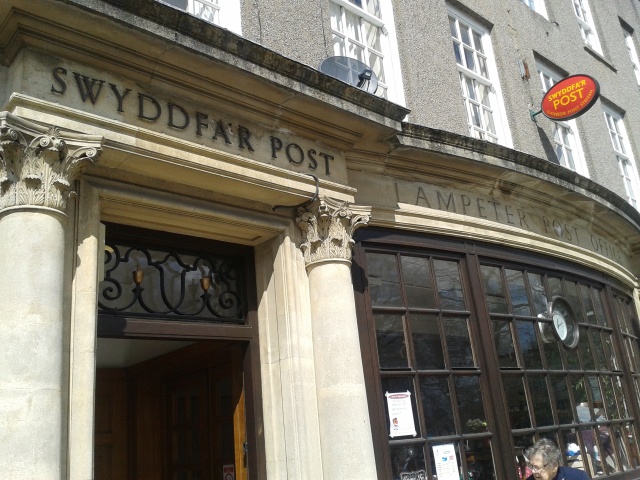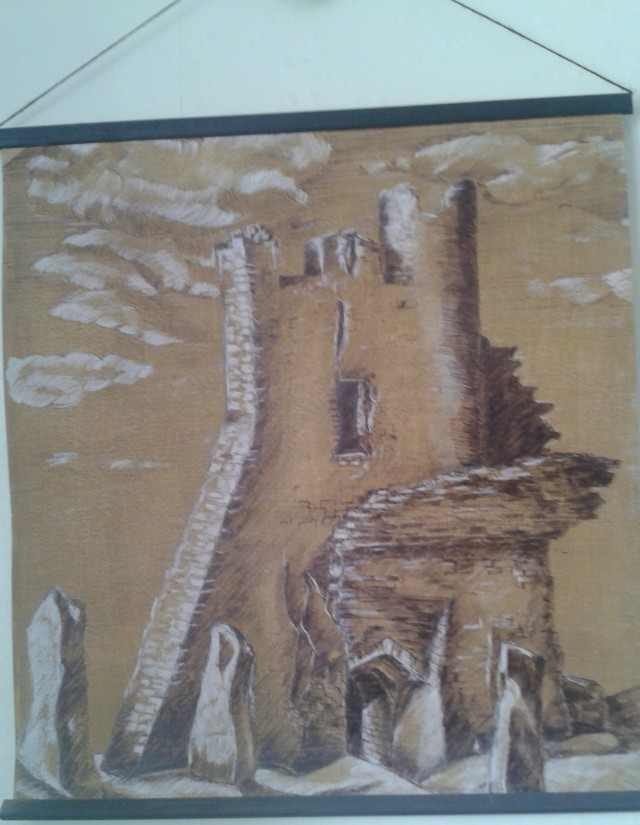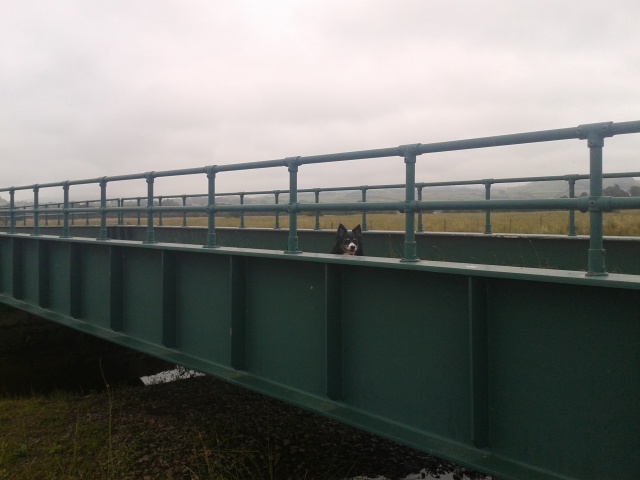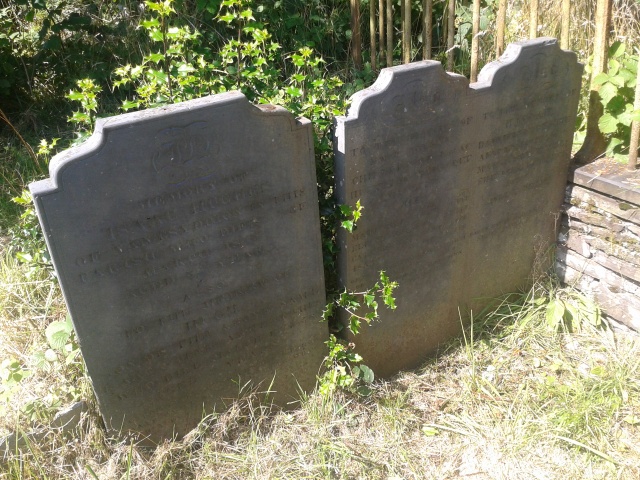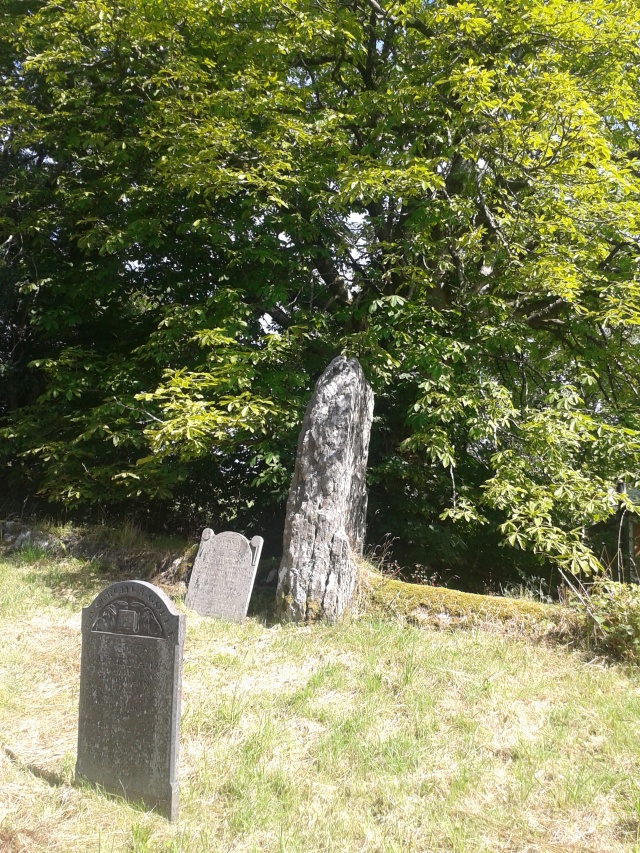The Post Office building, Lampeter. The Office closed in 2012 and is being used as a shop in 2013. You’ll note from the style that it was a symbol of an age of hope, when people looked forward to years of prosperity
 The remains of the Power House at the Frongoch mines, between Pontrhydygroes and Trawsgoed. Water-power produced electricity here in the (very) early 1900s. Local homes did not get a proper domestic-service until the late 1950s!
The remains of the Power House at the Frongoch mines, between Pontrhydygroes and Trawsgoed. Water-power produced electricity here in the (very) early 1900s. Local homes did not get a proper domestic-service until the late 1950s!
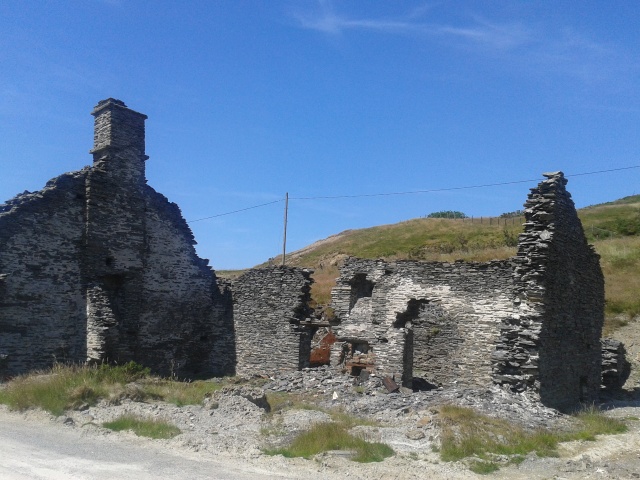 The remains of the Frongoch Mines. I still remember the big chimney which stood for nigh on 100 years before it was demolished for safety reasons only a few years ago.
The remains of the Frongoch Mines. I still remember the big chimney which stood for nigh on 100 years before it was demolished for safety reasons only a few years ago.
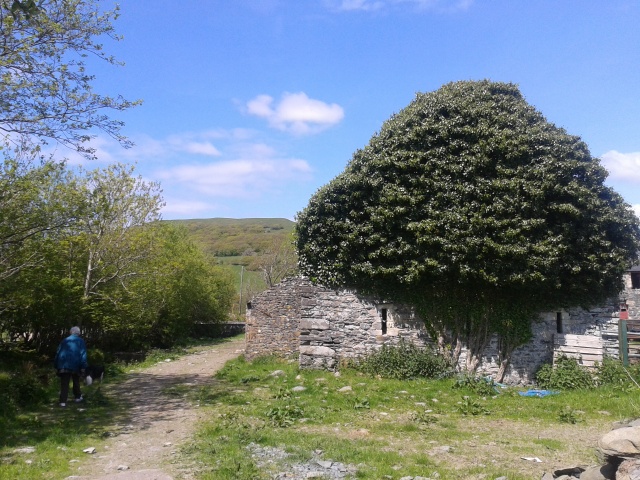 An old barn – part of the once far-famed Strata Florida Abbey. The remains of the abbey are nearby, and can still be visited.
An old barn – part of the once far-famed Strata Florida Abbey. The remains of the abbey are nearby, and can still be visited.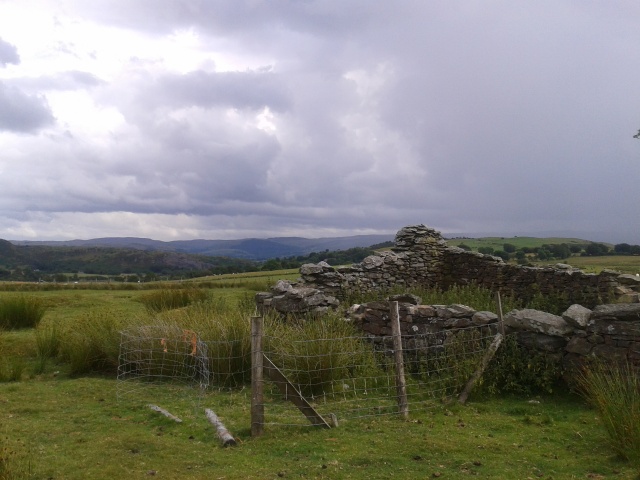 Remains of a tiny house – probably on the site of a “ty-unos” – on what was, until the 20th century, open moorland between Bronnant and Swyddffynnon.
Remains of a tiny house – probably on the site of a “ty-unos” – on what was, until the 20th century, open moorland between Bronnant and Swyddffynnon.
The remains of the Keep of Aberystwyth Castle, built by the Normans, and “slighted” by Cromwellian cannons during the English Civil War. (Very un-civil things, these wars!). The standing stones were put there when The National Esteddfod was held in Aberystwyth in the 1920s. I bought this painting from a talented student at Aber Uni when we had our taxi-company. It was her first sale, and I hope she went on to become a professional artist.
The still-stout railway-bridge which crosses Afon Teifi along what is now a walking-route. The old line, closed by the Beeching Axe in 1964 (after 98 years of service to the local communities) ran from Aberystwyth – Carmarthen. It crossed Cors Caron and the engineering feat was the work of David Davies, Llandinam, who used bundles of tree-branches and sacks of sheep-wool on which to build the permanent-way. There are still many farm gates in the area which have the old wooden railway-sleepers as gate-posts.
Gravestones in Ysbyty Cynfyn churchyard, known as “The Grave of the Quads”, as it’s said to be the first grave of quadruplets in Britain. Their father, a brother and a sister lie beside them. All died of typhoid which was rife in the mid-1800s. Their mother, devastated by what had happened, left the area to no-one knows where. The gravestones read:-
“In memory of Isaac Hughes of Nantsyddion in this parish who died 6th of March 1956 aged 32 years – also to the memory of Hugh son of the above nam’d Isaac & Margaret Hughes who died March 1st 1856 aged 5 years.”
Then we see the other stone:-
“Also to the memory of four infants children of Isaac Hughes by Margaret his wife.
1856
Margaret 17.Feb 21.Feb
Elizabeth 17.Feb 21.Feb
Catherine 17.Feb 22.Feb
Isaac 17.Feb 28.Feb
Also to the memory of Hannah, daughter of the aforesaid Isaac & Margaret Hughes. She died 10th March 1856 aged 3 years.”
One of the standing stones which are still in the circular chruchyard of Ysbyty Cynfyn churchyard. The original monastic cell was in the middle of the original pagan circle, as at many other sites. One recognises such places from their circular churchyards.
The “Christianising” of pagan sites was on the orders of the Church of Rome and its Dark Age missionaries carried out their orders diligently. For, it was said, if one changes the form of worship at any place, the people will still come to it to celebrate . . .
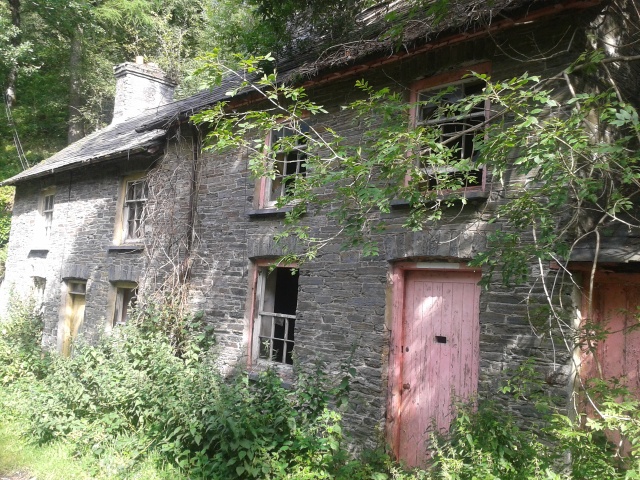
A pair of now-decaying houses beside the road up to the Hafod Estate from Pontrydygroes. They were originally Estate workers’ homes (quite good accomodation back in the early 19th Century), and I remember them being lived-in back in the 1950s. No chance of restoration now, though a similar cottage a little way down the road from them is a family-home still. (Posted Sunday, 24th November, 2013)
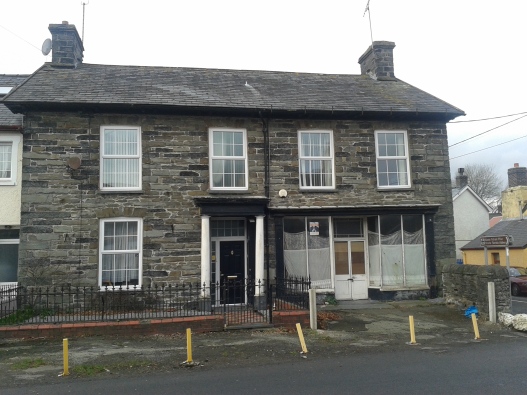
The Old Post Office, Pontrhydfendigaid, which was an important place in Victorian times when horse-drawn mail-coaches brought and collected the post there. It remained as a post-office and grocery shop until the 198os, and was the local – unmarked – bus-stop until a chap from South Wales bought it, and the house next door, and objected to people standing outside his home. The building has a preservation-order on it, but is gradually becoming more and more dilapidated. Photo taken and posted in February, 2016.
STAND BY – MORE TO BE
ADDED SOON !

